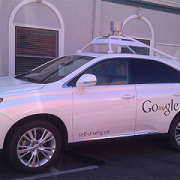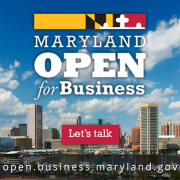News Roundup: Ford Introduces ‘SmartLink’ Connected-Car Plug-In For Older Vehicles, U.S. Lawmakers Consider Car Cybersecurity Bill, and More
Jennifer van der Kleut
A roundup of interesting headlines from the driverless and connected-car worlds over the past week:
Ford designs new device to turn older cars into connected cars
Ford Motor Co. has created a new device called SmartLink that can plug into older cars through the OBD link II and turn them into fully connected cars. The SmartLink includes a 4G LTE modem on board, letting it act as a Wi-Fi hotspot for up to 8 devices in the vehicle. It also enables remote start, lock and unlock functions, and can send alerts to a car owner via a companion web and mobile app to let them check the car’s diagnostic health, and get alerts related to security and service requirements. SmartLink was designed to work with Ford and Lincoln cars built between 2010 and 2016. Read more from TechCrunch.
Driverless bus debuts in Atlanta before embarking on U.S. tour
The Alliance for Transportation Authority offered rides in an autonomous, 12-passenger bus in Atlanta on Thursday to kick off a U.S. tour. The tour, which will take the bus to other major cities in states such as Texas and California. Representatives of the Alliance hope the tour, and free rides on the shuttle, will improve public perception of self-driving cars, which they see as one of the biggest barriers to the implementation of the technology. Read more from the Albuquerque Journal.
U.S. lawmakers introduce bill to study cybersecurity in connected cars
With at least 90 percent of cars on U.S. roads expected to have connected-car features by 2020, U.S. lawmakers on Wednesday introduced a bipartisan bill in the U.S. House of Representatives that would direct the National Highway Traffic Safety Administration (NHTSA) to study cybersecurity in vehicles. Named “The Security and Privacy in Your Car Act,” the bill requires the NHTSA to work with the Defense Department, the Federal Trade Commission, the National Institute of Standards and Technology, the Automotive Information Sharing and Analysis Center, SAE International, and academics and manufacturers in the automotive industry to set a standard for safety in all connected cars. Together, the group will study how to isolate software systems in vehicles, create a system to prevent and detect hacks, determine best practices for storing data and create a timeline for how to implement these standards. Read more from GeekWire.
Photo: Ford SmartLink plug-in / Credit: Ford Motor Co.


